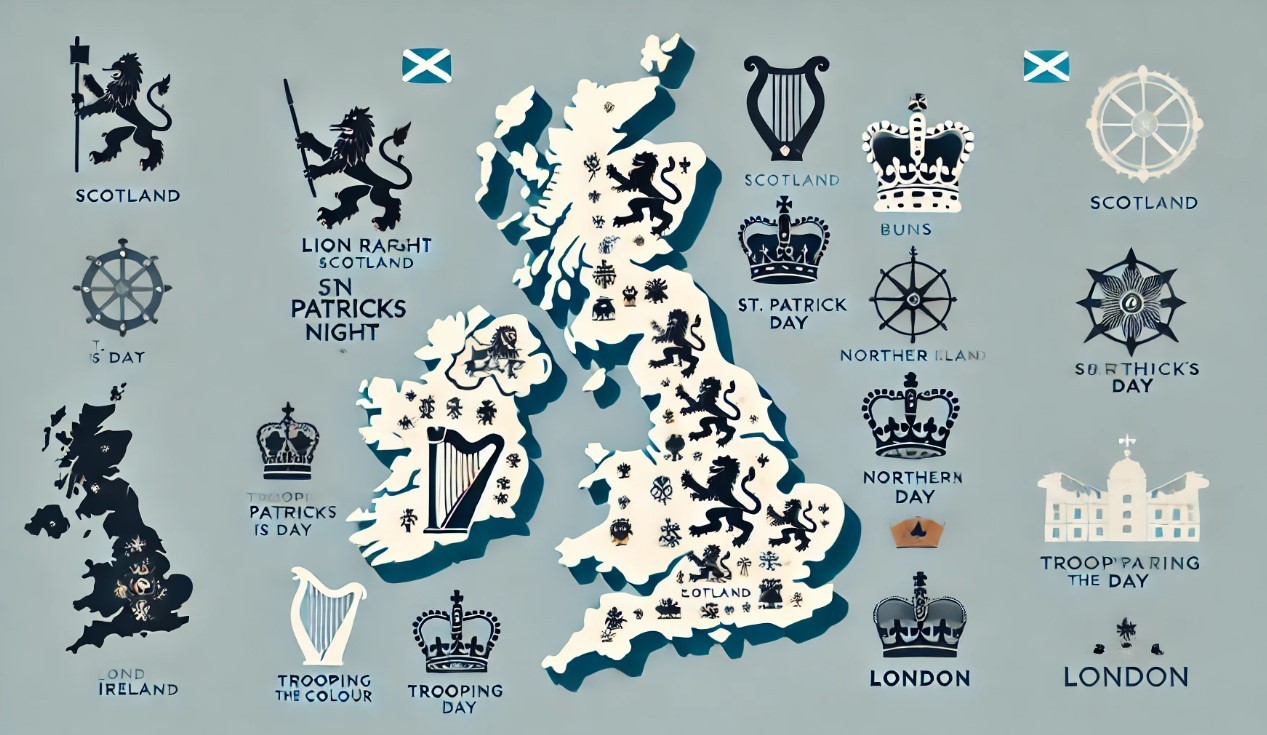10 Most Weirdest Islands In The World That Won't Believe Exist
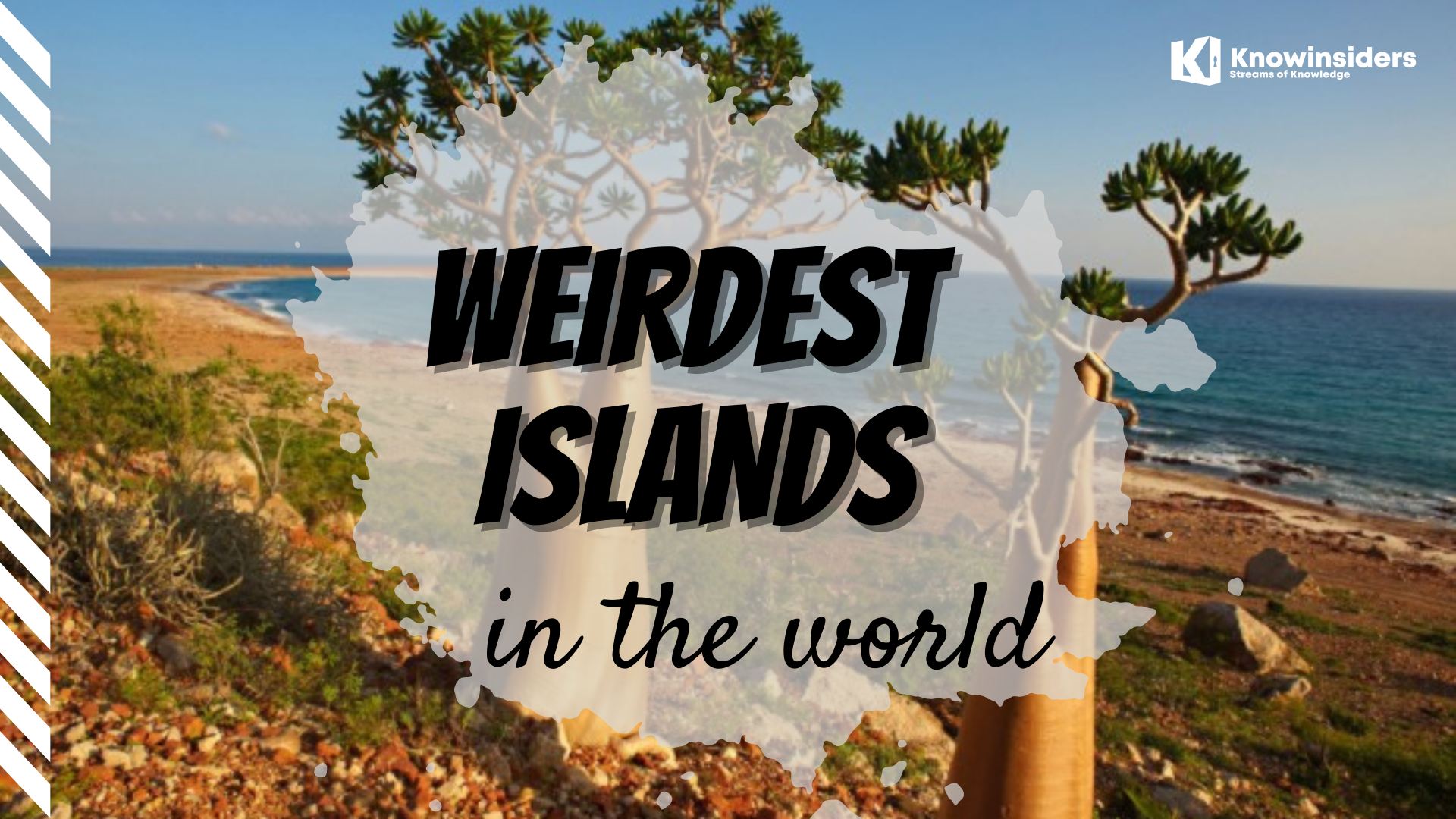 |
| Top Weirdest Islands In The World. Photo: knowinsiders. |
Islands are cute little havens, surrounded by water with picturesque landscapes, and greenery; sometimes flaunting kaleidoscopic fauna, sometimes mesmerizing with their quiet and peace. Wondering what can be strange about them?
Forget all things that you did know before. There are many weirdislands of the worldthat will make you question your idea of the picture-perfect islands. Let's scroll down to explore our top 10.
The list of the weirdest islands on earth
1. The Isola La Gaiola, Italy
2. Socotra Island, Yemen
3. Rabbit Island, Japan
4. The Island of the Dolls, Mexico
5. Rapa Nui of Easter Island, Chile
6. The Graveyard of the Atlantic
7. Ilha de Queimada Grande or Snake Island, Brazil
8. Christmas Island, Indian Ocean
9. The Floating Islands of Lake Titicaca, Peru
10. The Cat Island, Japan
***
What are the weirdest islands in the world?
1. The Isola La Gaiola, Italy
 |
| Visit Isola della Gaiola if you dare. Photo: Antonio Manfredonio / Flickr |
This island off the coast of Naples, which is actually made up of two minor islands linked by a bridge, is uninhabited, since many of its former owners were either met with extremely bad luck or untimely deaths. The island is surrounded by clear, blue water and beautiful skies, but believed to be extremely cursed.
Isola della Gaiola is a small but beautifully formed island just off the Gulf of Naples, where the rocky shores are lapped by emerald waters clear enough for glimpses of the submerged ancient ruins below. There’s even a private villa from which to enjoy the spectacular panoramic views. Yet the island remains abandoned, and many locals refuse to go near it for fear of becoming the next victim of the island’s curse.
The island actually comprises two islets connected by a narrow stone bridge just a few metres in length. At one time, it was known as Euplea and was considered the protector of safe navigation. Noble Romans built holiday homes across this scenic stretch of coast, and the remains of an Imperial Age villa can be seen today in the clear waters surrounding the island. Some scholars believe that Virgil, one of Rome’s greatest poets, taught here. So, where did it all go wrong for Isola della Gaiola?
The run of bad luck might have started in the 1800s when a hermit known as Il Mago, or The Wizard, lived on the island. Isolated from the community, save for the occasional hand out from local fisherman, Il Mago lived a solitary existence, so there was no one to provide an explanation when he simply vanished without trace, never to be seen again. Luigi de Negri was the next resident. He built the spacious villa that still stands on the island today. But he suffered financial ruin shortly after.
In 1911, Captain Gaspare Albenga was piloting his ship around the island, apparently considering buying it, when he crashed into rocks and drowned. Some sources say the story was even more dramatic and that his ship didn’t sink, but it actually disappeared, along with the captain himself.
More misfortune followed in the 1920s when the Swiss owner of the villa, Hans Braun was murdered, his body found wrapped in a rug in his own home. His widow drowned in the sea shortly after. The next owner had a heart attack, and another committed suicide in a mental hospital.
Italians are a superstitious bunch, so it’s always possible that these stories might have become exaggerated with time. A cable car once connected the island with the mainland, but there doesn’t seem to be any evidence to prove the tale of a woman swept out to sea while riding it in 1926. The misfortunes suffered by the villa’s more modern residents, however, are well publicised.
| A hermit named “The Wizard” first inhabited La Gaiola in the early 1800s. Afterwards, the island’s singular, solitary villa was built. A series of wealthy owners took control of the island, from a Swiss businessman to Fiat bigwig Gianni Agnelli to billionaire John Paul Getty. Each of them seemed to encounter misfortunes of varying degrees around the time they acquired the island. You can also get to La Gaiola via a glass-bottom boat, snorkel or diving tour. And if you’d like to live there, we’re pretty sure the mysterious villa is permanently up for grabs. Cursed or not, the island’s cobblestone streets are adorably quaint, with a great view! |
2. Socotra Island, Yemen
 |
| Socotra Island. Photo: dailysabah |
Socotra, the archipelago's main island, is located at the entrance to the Gulf of Aden, only 233 kilometers (145 miles) from the Horn of Africa and belongs to Yemen. Due to its nature, the archipelago is believed to be a prolongation of the Horn of Africa rather than Arabian peninsula. Socotra is a site of global importance for biodiversity and unique species of both animals and plants.
UNESCO says "37% of Socotra’s 825 plant species, 90% of its reptile species and 95% of its land snail species do not occur anywhere else in the world."
Socotra's ancient culture, blending Arabia with Africa and India, evolved with the unique environment.
"It was an ark of a very ancient human existence from the South Arabian mainland a couple of thousand years ago," Mackintosh-Smith told AFP.
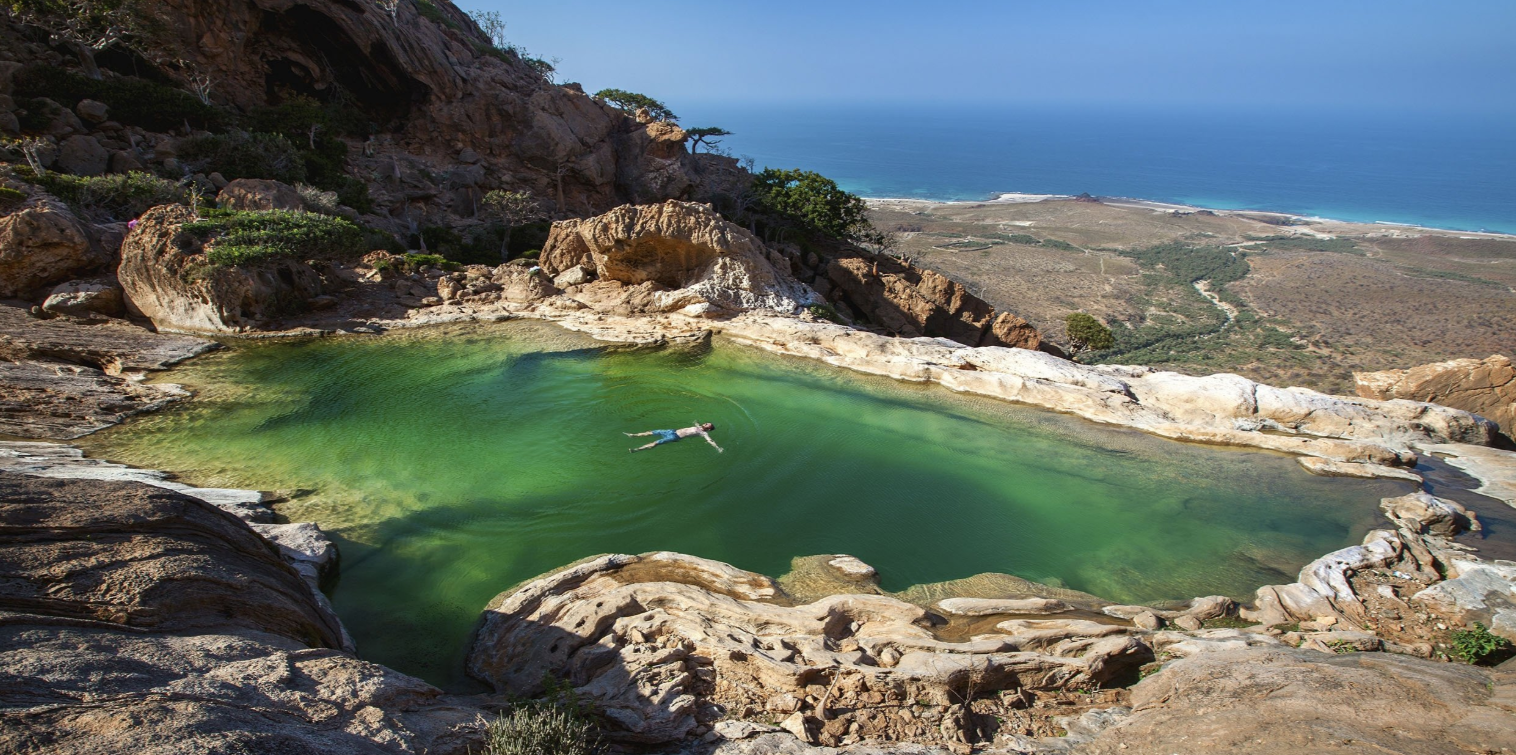 |
| Socotra Island. Photo: dailysabah |
Socotra also supports globally significant populations of land and sea birds, including a number of threatened species. Socotra is sometimes referred to as the "Galapagos of the Indian Ocean." The Ecuadorian archipelago is also famous for its isolated geography and plant and animal species.
The symbol of the island is the rare Dragon Blood Tree (Dracaena cinnabari). The tree is so called due to the red sap it produces. Socotra is also home to countless beaches unsurpassed in their wild beauty. All of them are covered by white coral sand, which also lies on the seabed. The beaches then morph into unique giant white sand dunes moving inland.
Unfortunately, the devastating Yemeni civil war did not leave Socotra untouched. Both the United Arab Emirates and Saudi Arabia, nominal allies in the conflict who fell out, established military presence on Socotra. The UAE-backed separatists and forces loyal to the Yemeni government engaged in destructive clashes around the island. The fighting threatens to cause irreversible damage to Socotra. The Yemeni conflict has pushed the Arab world’s already poorest nation to the brink of famine and killed over 100,000 people.
Islanders say things changed rapidly when an airport opened from 2003. Today, plastic water bottles and bags clog up creeks near villages, and steady streams of tourists arrive on a weekly two-hour flight from Abu Dhabi.
The visitors post pictures on social media of the island's stunning -- but incredibly fragile -- beauty. Balancing the protection of the environment with the needs of people for roads, healthcare, jobs and opportunities is a hard task.
"Socotris are proud of their heritage, and are keen to protect it," said Saeed Salim Abdulrahman, who is completing a degree translating oral histories from the Socotri language into Arabic and English.
3. Rabbit Island, Japan
 |
| Okunoshima in Hiroshima Prefecture is increasingly known for its "cute" rabbits and has earned the nickname of "usagishima" or Rabbit Island. Photo: Japanvisitor. |
There is an island where rabbits rule. They are well fed, free from predators, and spend their time lounging around getting photographed by fawning humans. This strange island of the world was once home to several poisonous gas factories. Now it has transformed to a rabbit hub with thousands and thousands of rabbits hopping on the island. Some believe them to be the descendants of the group which was brought there to test poisonous gases. While others claim them to be somehow descended from heaven to pay homage to the original lot.
It’s a small island in the Seto Inland Sea called Ōkunoshima, two miles off the coast of the Japanese city of Takehara, in Hiroshima Prefecture. These days, though, it’s most often referred to by its nickname Usagi Jima, which translates to Rabbit Island and is so named for the hundreds of feral rabbits that call it home.
It’s a bit of a mystery how all these bunnies ended up on a tiny island whose previous claim to fame (infamy, actually) was as the spot where the Japanese Imperial Army manufactured thousands of tons of poison gas during World War II in a facility so secret the island was removed from all Japanese maps. According to The New York Times, the poison—mustard gas, phosgene and other types—was used against Chinese soldiers and civilians in the 1930s and 40s during the war in China, killing about 80,000 people by some estimates.
Some believe the island’s terrible history may hold the key to why rabbits now call it home. Back in 1929, when the army began manufacturing chemical weapons, rabbits were brought to the island and used to test the effectiveness of the poison gas, according to The Guardian. This gave rise to the belief that workers may have released the captive animals onto the island following the war. Most experts disagree with this version of events, though. Ellis Krauss, a professor of Japanese politics at the University of California San Diego, told the website The Dodo in a 2014 interview that the original rabbits were wiped out after the war: “The test rabbits were all euthanized by the Americans when they came to the island during the Occupation… about 200 of the poor things were being [used] in experiments by the Japanese,” said Krauss.
| Neither the biggest nor the smallest, the tiny land mass measures less than a square kilometre. There’s no natural water supply – that’s shipped in from the mainland – and as of 2010, only 26 people live on the island, but Okunoshima is far better known for its population of four-legged residents. There is a strange propensity in Japan to name islands after cute critters, and myths abound of how beloved animals arrived in several remote destinations spanning the Japanese archipelago. Tashirojima, for example, acquired its famous cats during the late Edo period (1603-1868), to act as pest control on the island’s silkworm farms, a wholesome, practical explanation. |
Many visitors now come here though because of its nickname, usagishima which means Rabbit Island as the island is home to more than 300 wild rabbits descended from a small group of domesticated rabbits left here about 40 years ago. There is no difficulty finding the bunnies, from the moment you step off the ferry they come bounding up to visitors hoping to get fed.
Rabbit food is available from the visitor center, but many people bring their own. Fluffy little bunnies are certainly cute and as cute continues to be a major component of contemporary Japanese culture the island is seeing an increase of visitors who come solely for the rabbits. In order to keep the population from declining all other kinds of pets, like dogs or cats, are banned from the island.
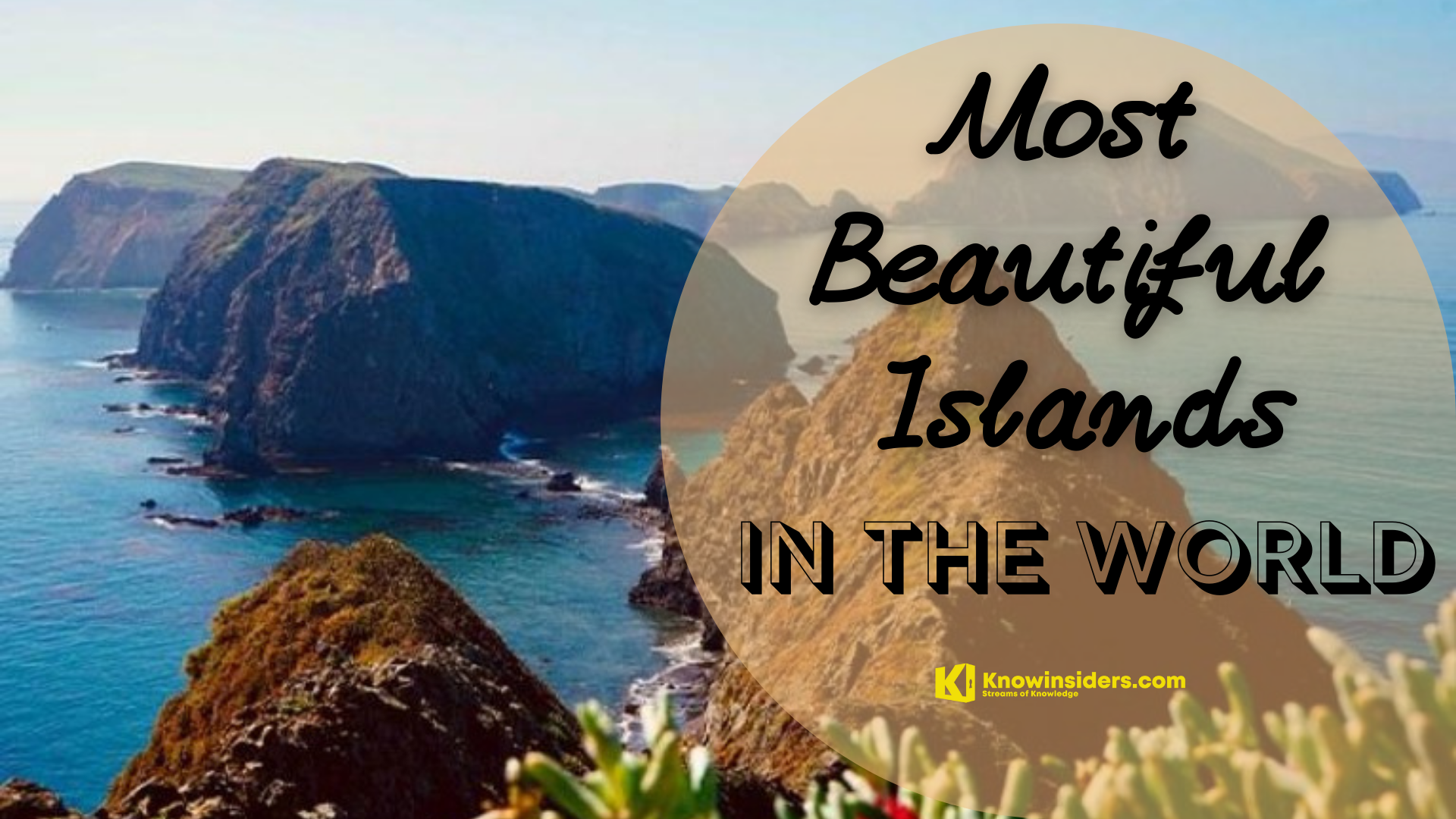 Top 10 Most Beautiful Islands In The World Top 10 Most Beautiful Islands In The World Are you ready to see stunning views that you can't find anywhere else in the world? Let's find out our top 10 most beautiful islands ... |
4. The Island of the Dolls, Mexico
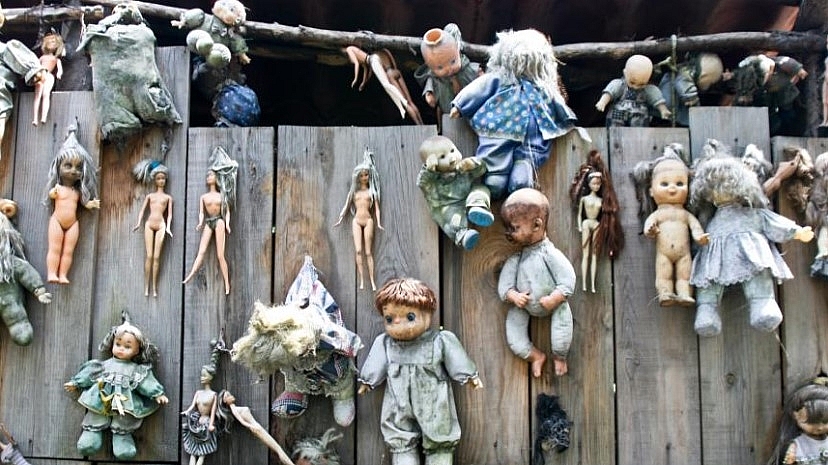 |
| Photo: discovery. |
La Isla de las Munecas, or Island of the Dolls, is located in the canals of Xochimico, near Mexico City. The island is said to be dedicated to the soul of a girl who mysteriously drowned on the island many years ago, and the hundreds of severed limbs and decapitated heads of dolls are possessed by her spirit.
There’s nothing wrong with dolls, but when they’re dismembered, it becomes a bit creepy. Between the canals of Xochimilco in southern Mexico City, you’ll find the Isla de las Muñecas where hundreds of dolls–many of them missing limbs, eyes, or even heads–hang from the trees.
The story of La Isla de las Muñecas ("The Island of the Dolls") is intimately entwined with the story of Don Julian Santana Barrera. A native of Xochimilco, a borough of Mexico City, Don Julian left his wife and family sometime in the mid-20th century to sequester himself on an island on Teshuilo Lake. His reasons for doing so are hazy at best, but as soon became clear, Santana Barrera was not necessarily of sound mind. Not long after relocating, he made a chilling discovery on the shores of his island: the body of a young girl, drowned in the lake. A doll came floating down the canals shortly afterward, changing the course of Santana Barrera's life and the shape of the island for years to come.
Alone on the island, Barrera took the doll and hung it from a tree in order to appease the spirit of the deceased girl. But, at least in the eyes of the man who now considered himself the island's caretaker, the one doll was not enough. For the next 50 years, Santana Barrera would scrounge dolls from the trash and from the canals, and hang them from the island's many trees. Some he'd hang whole, others in various states of disrepair — headless, torso-less, or taken apart in other ways.
These don't sound like the actions of a person with a healthy grasp on reality, and indeed, there are many doubts surrounding this legend. The biggest question? The reality of the little girl who died. Many people, including Don Julian's own family, didn't believe that he ever found the girl, although whether they believe he made it up, imagined the experience, or was somehow mistaken is unclear. What is clear is that whether the girl existed or not, Don Julian devoted the rest of his life to her. And perhaps creepiest of all, even the end of his life had clear ties to the story of the drowned child.
| Some time in the past, a grieving man by the name of Don Julian, who had lost his entire family, heard a woman screaming in the distance. She was drowning in one of the many local canals. He was unable to save her, but he still heard her voice at night after her death, and so he began stringing dolls up all over the place to ward off her spirit. Soon others, perhaps sympathetic to his cause, or else eager to see dolls swinging from trees, gave him even more dolls and doll parts to hang. Thus, the island became a legend, and later on, an eerie tourist attraction. |
In 2001, Don Julian Santana Barrera passed away. His body was discovered — you guessed it — drowned in the canal, in the exact place he always said he'd seen the little girl. In response, tourists began flocking to the island to pay tribute. They brought dolls of their own, and to this day people honor both Santana Barrera and the girl (whether she was real or not) by hanging up dolls in tribute. You can do so too. Many ferries stop here, making it a macabre must-see on any tour of these ancient Aztec canals.
5. Rapa Nui or Easter Island, Chile
 |
| Rapa Nui. Photo: latinroutes. |
Few areas in the world possess a more mystical pull than this tiny speck of land, one of the most isolated places on Earth. It's hard to feel connected to Chile, over 2300 miles (3700km) to the east, let alone the wider world. Endowed with the most logic-defying statues on the planet – the strikingly familiar moai – Easter Island (Rapa Nui to its native Polynesian inhabitants) emanates a magnetic, mysterious vibe.
A Polynesian volcanic island in the Pacific Ocean, at the southeastern most point of the Polynesian triangle, Easter Island—known locally as Rapa Nui—is a special territory of Chile that was annexed in 1888. It is most famous for the hundreds of extant large carved monolithic statues, known as moai, that were created to represent ancestors by the Rapa Nui people from approximately the ninth to the seventeenth centuries. Much of the island is protected within Rapa Nui National Park, a UNESCO World Heritage site that is managed by CONAF (Corporación Nacional Forestal de Chile), the organization responsible for the management, administration, and conservation of Chile’s national parks.
Easter Island’s unique archaeological legacy is of exceptional importance to humankind. Much of what survives on the island has not been completely explored or interpreted. For over fifty years, WMF has played a substantial role in the conservation of the island’s heritage, in an integrated approach that considers the cultural, natural, and human aspects of preservation.
The first human inhabitants of Rapa Nui (the Polynesian name for Easter Island; its Spanish name is Isla de Pascua) are believed to have arrived in an organized party of emigrants. Archaeology dates their arrival at between 700-800 A.D., while linguists estimate it was around the year 400. Tradition holds that the first king of Rapa Nui was Hoto-Matua, a ruler from a Polynesian subgroup (possibly from the Marquesa Islands) whose ship traveled thousands of miles before landing at Anakena, one of the few sandy beaches on the island’s rocky coast.
| Littered all over the island, there are 887 strange statues, over 3 stories tall, famous as Moia statues. And they weigh crazy 14 tons and measure huge 13 feet! Strange is the question of how did early Polynesian inhabitants accomplish such monumental task with their fairly primitive tools. They had no carriages or cranes to pick and drop the large stones out of which the statues are carved. There is no answer though. Did you know? After the decline of the moai culture, a new cult of bird worship developed on Easter Island. It was centered on a ceremonial village called Orongo, built on the rim of the crater of the Rano Kao volcano. |
The greatest evidence for the rich culture developed by the original settlers of Rapa Nui and their descendants is the existence of nearly 900 giant stone statues that have been found in diverse locations around the island. Averaging 13 feet (4 meters) high, with a weight of 13 tons, these enormous stone busts–known as moai–were carved out of tuff (the light, porous rock formed by consolidated volcanic ash) and placed atop ceremonial stone platforms called ahus. It is still unknown precisely why these statues were constructed in such numbers and on such a scale, or how they were moved around the island.
6. The Graveyard of the Atlantic
 |
| Photo: outerbanksvacations. |
The ocean floor is littered with the skeletons of thousands of ships. In fact, some areas have had so many shipwrecks that they’re famous for them. One such area is known as “The Graveyard of the Atlantic.”
This region starts in the Outer Banks of North Carolina. It stretches north to the southern entrance of Chesapeake Bay off the Virginia coastline. There, two forces collide to create stormy, dangerous seas. One is the Labrador Current. This is an arctic stream of icy water from the coast of Greenland. The other is the Gulf Stream, which contains warm waters from the Caribbean.
When these two forces mix, rough seas and dense fog are usually the result. Some areas in the Graveyard of the Atlantic are known for especially dangerous seas. These include Cape Hatteras, Cape Fear, and Diamond Shoals.
Remnants of some of the lost vessels are still visible to those on shore; many more are buried in the ever-shifting sands beyond the breakers. They include a fleet of Spanish treasure ships, returning to Europe after successful raids in the Caribbean in 1750 only to encounter a hurricane and end up strewn along the North Carolina coast. There is the coastal steamer Pulaski, lost on the Charleston-to-Baltimore run when it wrecked on the beach at Ocracoke in 1838 with the loss of 100 passengers and crewmen. Among other notable remains are those of sleek Civil War blockade-runners that failed in their effort to sneak into the Cape Fear River under the cover of darkness; the little ironclad Monitor, the "cheesebox on a raft," sunk off Cape Hatteras while being towed south following her famous battle with the Merrimac; and the United States gunboat Huron, run aground at Nags Head through navigational error, with the count of lost crewmen reaching 103.
There have been many other recorded shipwrecks in North Carolina's Graveyard of the Atlantic. Modern underwater searching equipment has brought the current estimate to the neighborhood of 2,000. They range from the tanker Mirlo, lost off Chicamacomico in 1918 after hitting a German mine, to larger tankers-a total of more than two dozen of them-sunk by Nazi submarines in 1942, including six in the course of one terrible day and night within sight of Cape Hatteras. A large number of doomed ships in the days of sail were schooners, but there was a fair sampling of everything from barks, brigs, and brigantines to a clipper ship and a pilot boat. Among the more modern craft lost were freighters, trawlers, barges, lightships, and even two battleships sunk by aircraft off Cape Hatteras to prove Gen. Billy Mitchell's claim that airpower would be an important part of future warfare.
Despite the widespread publicity given to North Carolina's deadly coastline, it has competition. The shoreline of Sable Island, off Nova Scotia, is so littered with shipwrecks that it, too, has earned the name "Graveyard of the Atlantic."
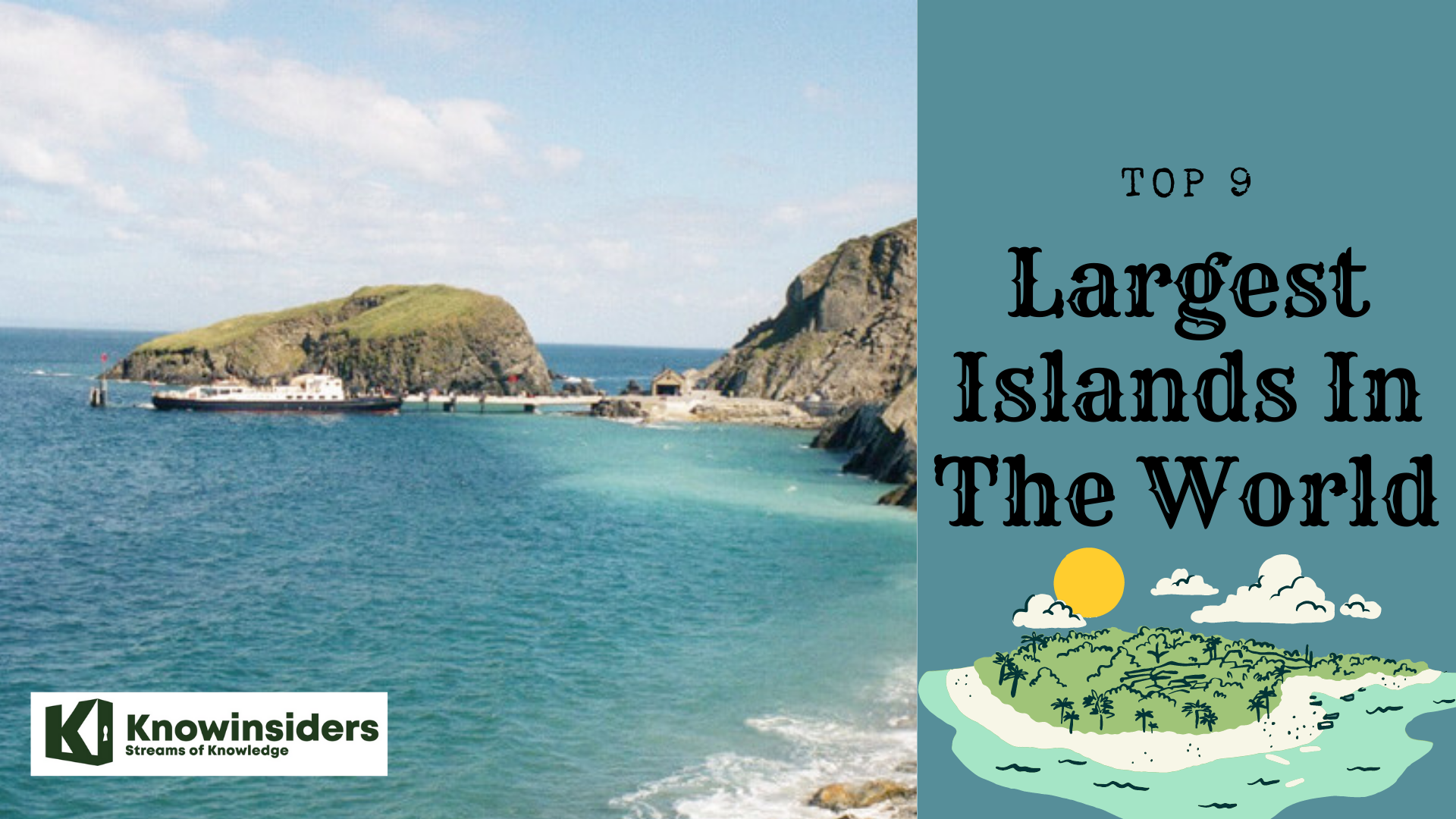 Top 9 Largest Islands In The World Top 9 Largest Islands In The World There are millions islands in the world. Some of them are tiny, and others are huge. Here is the list of top 9 largest islands ... |
7. Ilha de Queimada Grande or Snake Island, Brazil
 |
| Snake Island. Photo: nilepost. |
The stuff nightmares are made off—an island full of snakes! Ilha da Queimada Grande in the Atlantic Ocean could be a beautiful paradise if it didn’t have the highest concentration of venomous snakes in the world. Thousands of Golden Lancehead Vipers slither on the now uninhabited island (there was a manned lighthouse from 1909 to 1920) and a doctor has to be present when the navy makes its annual stop. While poachers have been known to visit Ilha da Queimada Grande to trap, then sell the snakes, the island itself surely won’t be a hotcake destination any time soon.
Brazil’s Ilha de Queimada Grande – dubbed Snake Island – is home to a large population of one of the world’s deadliest snakes. The golden lancehead viper’s venom is so poisonous that it can melt human flesh, and some claim that there’s one snake per square meter in certain areas. Therefore, for safety reasons, the Brazilian government doesn’t allow visitors, and a doctor is required on the team of any research visits.
It is estimated that anywhere between 2000 and 5000 snakes currently inhabit the 106 acre island, making it less than appealing and expressly forbidden by the Brazilian Navy for anyone to land on except scientists. The Golden Lancehead Viper, one of the most venomous snakes in the world, is the sole snake inhabitant.
The golden lanceheads that occupy Snake Island grow to well over half a meter long, and the venom in their bites basically melts the flesh around it – yikes! As a matter of fact, the golden lancehead is so dangerous that aside from special scientific trips, the Brazilian Navy has forbidden anyone from actually going to the island; and even for scientists, it’s absolutely necessary that a doctor is present on the expedion at all times. However, there’s another reason why the Navy forbade everyone from landing on the island – golden lanceheads are extremely valuable on the black market, with one specimen going to $30.000 – and believe it or not, some people actually took their chances with this. But the Navy keeps an eye out for this, and actually has people who come to maintain it (cut some vegetation) at regular time, also maintaining the lighthouse on the island.
| Scary, right? Yes, Snake island is full of 5000 Golden Lanceheads, one of the most dangerous and venomous snakes in the world. These snakes slurp and surf the island like kings as they are the sole inhabitants of the island, sparing a tourist or two, here and there. |
Most snakes are in the trees, because that’s where the birds are – their main source of food. Marcelo Duarte is a biologist who has been studying Snake Island for quite a while and has visited the island for over 20 times. He says that the locals’ claim of one to five snakes per square meter is an exaggeration, though perhaps not by much, and believes that number to be 1 snake / square meter. I don’t know if there’s a record for this, but it’s likely the highest population of snakes / square kilometer. I think it’s safe to say that Indiana Jones would not be happy to visit this island.
But why are there so many snakes there? Well, some 11.000 years ago the sea levels rose and the island became isolated from the mainland – as were the species which were living on it. Since migratory birds were the only food available, the snakes started developing more and more powerful venom, to kill faster. Naturall, there are no people living on the island. As the legend has it, the last people to live there were the lighthouse man and his family – just as they were about to leave the island, they were attacked by snakes from the trees, in 1920. However, there is no historic evidence of that. The light house is now automated.
8. Christmas Island, Indian Ocean
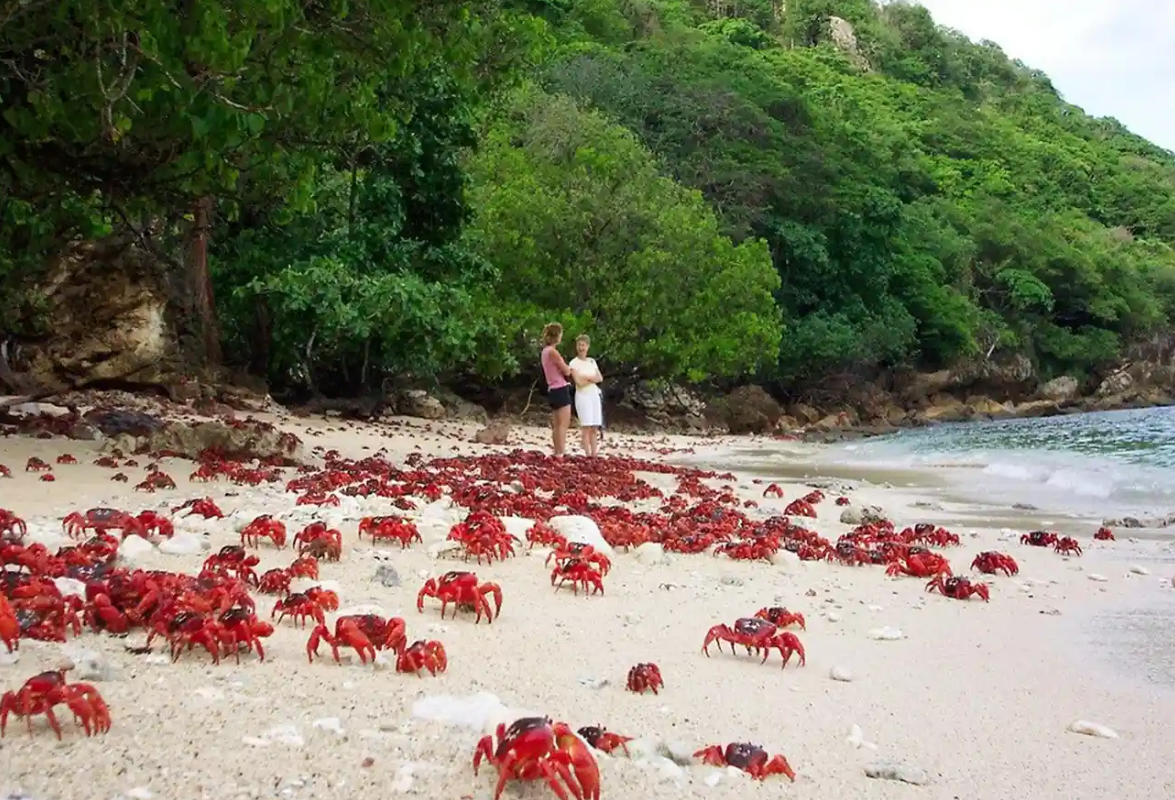 |
| Red crabs migrate from the forest to the sea on Christmas Island. Photograph: SUPPLIED/PR IMAGE |
Christmas Island is a remote, dog-shaped tropical island located 1550 kilometers northwest of the Australian mainland and south of Java. It is an Australian external territory, also called “Galapagos of the Indian Ocean”. 2/3 of the island is covered by a National Park so it is a gorgeous destination to visit for a remote feel where you are surrounded by breathtaking nature, friendly locals and unique sights. The easiest way to get here is from Jakarta, Indonesia (it only takes a 45 minute plane ride).
Christmas Island is the tip of a 5,000-metre submarine volcano that is roughly 60-million years old. Rising to a peak of 361 metres above sea level, the island has extraordinary access to the depths of the ocean and its marine creatures, as well as world-class Ramsar rainforests. The island’s 1800 residents are a world-class example of a respectful and tolerant community with Chinese, Malay, European and other cultures. This island is a treasure of Australian egalitarianism and fairness with Muslim, Christian, Taoist and Buddhist faiths celebrating together throughout the year.
The annual red crab migration is an internationally renowned natural event on Christmas Island, where millions of crabs travel through the jungle to the ocean, where they mate and then spawn by moonlight between October and January each year.
Now you may be wondering where Christmas Island got its name…when new territories were being discovered, it was not uncommon for territories to be named after the day they were first sighted. Christmas Island is one of those territories, named on Christmas Day, 1643 by an English sea captain.
Christmas Island is a protected Australian national park, and acts as the ideal ecosystem for the Christmas Island red crab. Throughout most of the year, the crabs live under the forest canopy, but during the rainy season nearly 120 million crabs make the five mile, month long journey to the ocean to spawn. Super-colonies of ants have been known to terrorize and blind the crabs throughout their migration.
| The island is named so, as it was discovered on Christmas day in 1643. Populating the island are 14 species of crabs, who scramble to leave their inland burrows during the rainy season to spawn in the sea. Nearly 140 million crabs make this month long treacherous five-mile journey to the ocean, albeit all the hurdles of dehydration, dangerous plains, squashing under the vehicles and crazy herds of yellow ants. |
To see the annual crab migration on Christmas Island is an incredible experience. It is said to a be a ‘natural wonder’ as 60 million red land crabs make their way to the coast.. and it is something you can only see on Christmas Island. It is one of the main yearly attractions on Christmas Island and generally happens in October or November.
Diving and snorkeling are popular activities on the island, as it has over 60 dive sites and clear warm waters all year long. You can see over 575 species of tropical fish and experience the underwater world unique to the Christmas Island area.
The best (and really) only way to get around Christmas Island is by car since so much of the island is covered by the Christmas Island National Park. You can rent a car from the airport where you will land. There is also no public transportation, but this just adds to the charm of visiting a remote place.
9. The Floating Islands of Lake Titicaca, Peru
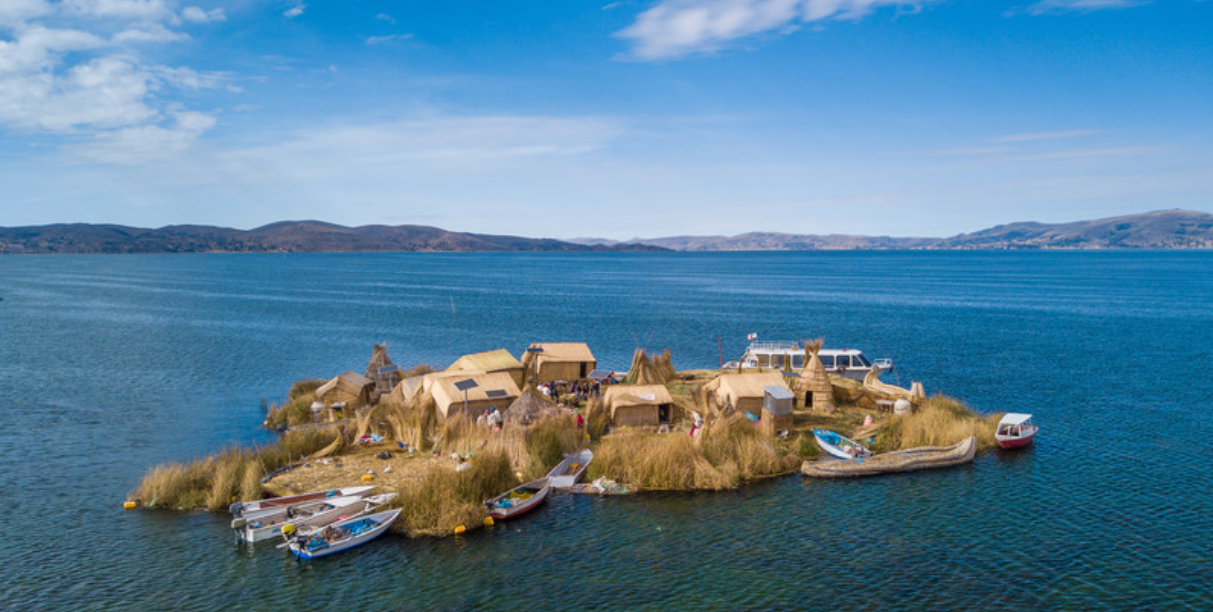 |
| Photo: intrep.idtravel |
Locals say Lake Titicaca is the only place on earth you can get altitude sickness and seasickness at the same time. At over 3,800 meters above sea level, it is the world’s highest navigable body of water. n the immense Andean highlands is where you can find Lake Titicaca, the largest high-altitude lake in the world. Its waters are home to Lake Titicaca’s mysterious and fantastic floating islands that contain a unique cultural wealth. This is because their predominantly indigenous communities still maintain the traditions of the Pre-Inca and Inca Empires. And among its many legends, it is said that the Andean culture considered Lake Titicaca as the cradle of the Sun and the Inca Empire.
First of all, where is Lake Titicaca? The Lake is located near the quiet but privileged city of Puno. The city of Puno is considered the Folk Capital of Peru and America for its colorful and varied folklore. It is immensely rich in music, dance, customs, and legends that make this city, without a doubt, the richest and most dazzling place on the entire continent. You can be part of the different Puno boat tours to get to know the Uros islands and the other islands around. Lake Titicaca also spans the neighboring country of Bolivia in the Sierra Andina. The Bolivian part occupies 40% of the lake while the Peruvian part occupies 60%. Lake Titicaca is a very popular stop before crossing the border. It is considered the largest lake in South America. But without a doubt, the most remarkable things about Lake Titicaca are its floating islands and the cultures that inhabit them. Around 4,000 people are believed to live on the islands in the middle of the lake. The daily life and history of the people who live on the Uros Islands are quite intriguing. You will be able to experience different experiences anywhere in the world. To get to the floating islands of Lake Titicaca, we recommend that you plan your tour so that you can enjoy the adventure without problems.
| These floating man-made islands are quite strange and wondrous in their own way. They are indeed woven mats made out of floating totora reeds which are fastened together with ropes. Locals use these islands as settlements to avoid disruptions with neighboring tribes regarding the territories. |
There is a particular Lake Titicaca mystery that many people want to figure out: how are the floating islands of Lake Titicaca built? These artificial islands are made of totora (a reed that grows in shallow places) that floats in abundance along the lake. But the reed occasionally disintegrates at the bottom of Lake Titicaca, so the inhabitants have to continually maintain the islands. Every 20 days, they must add a new layer of totora reeds. Also, the floating islands are linked with ropes, stakes, and stones that sink into the lake. The ingenuity of the Uros culture was what kept them alive to this day.
Both their houses and their boats are built with reed cane. Even the furniture in their homes is made from this cane. Their boats are in the shape of a canoe, but with animal decorations on the prow. These are used both for fishing and for taking visitors to the islands. Like the islands, the boats are usually moored at the bottom of the Lake. But they can be moved if necessary. Each island has a series of simple houses, although the main island has a watchtower. Originally, the islands were moved as a defense mechanism for the different tribes that threatened to invade. Small islands have even been created that function as latrines. Despite the traditional lifestyle that the inhabitants of the Uros islands live, people are not against modern comforts. Some families own motorboats, solar panels, and other amenities. Even the main island is home to a radio station that plays music throughout the day. You can get to the Uros islands from any point, although from Puno it is much easier to access.
10. The Cat Island, Japan
 |
| Cats crowd around village nurse and Ozu city official Atsuko Ogata as she carries a bag of cat food to the designated feeding place on Aoshima Island in Ehime prefecture in southern Japan February 25, 2015. REUTERS/Thomas Peter |
Originally introduced to the mile-long island of Aoshima to deal with mice that plagued fishermen's boats, the cats stayed on - and multiplied.
More than 120 cats swarm the island with only a handful of humans for company, mostly pensioners who didn't join the waves of migrants seeking work in the cities after World War Two. Originally introduced to the mile-long island of Aoshima to deal with mice that plagued fishermen's boats, the cats stayed on — and multiplied. More than 120 cats swarm the island with only a handful of humans for company, mostly pensioners who didn't join the waves of migrants seeking work in the cities after World War Two.
Aoshima, a 30-minute ferry ride off the coast of Ehime prefecture, had been home to 900 people in 1945. The only sign of human activity now is the boatload of day-trippers from the mainland, visiting what is locally known as Cat Island.
With no restaurants, cars, shops or kiosks selling snacks, Aoshima is no tourist haven. But cat lovers are not complaining.
The allure of cats is not surprising in a country that gave the world Hello Kitty, a cartoon character considered the epitome of cuteness. Cat cafes have long been popular in Tokyo, catering to fans who can't keep the animals at home because of strict housing regulations that often forbid pets.
The cats of Aoshima are not too picky, surviving on the rice balls, energy bars or potatoes they cadge off tourists. In the absence of natural predators, they roam the island without fear.
Not all the residents are admirers, though. One elderly woman shooed the animals away with a stick when they dug up her back garden. Locals are trying to keep the feline population in check — at least 10 cats have been neutered.
| Aoshima Island is one of about a dozen "cat islands" around Japan, small places where there are significantly more feline residents than people. In Aoshima more than a hundred cats prowl the island, curling up in abandoned houses or strutting about in the quiet fishing village. Cats outnumber humans six to one on the island. Recently becoming popular online, tiny Aoshima has seen a steep rise in tourist visits, overwhelming the handful of permanent residents. This small island in Japan has barely 100 human residents but a large cat population. In order to keep the mouse population under control, it is believed that cats were introduced in the 1850s. If you plan on visiting the island, make sure you stay in a cat-like cabin for a different experience altogether. It is available for overnight stays between April and November. |
 Who Was The First King And Top 10 Greatest Kings In The World of All Time Who Was The First King And Top 10 Greatest Kings In The World of All Time Who was the King of the first empire in the world’s history? Read on this article to know the answer. |
 Top 10 Biggest Insects in the World Top 10 Biggest Insects in the World The largest insects that ever existed were dragonfly-like bugs of the extinct order Meganisoptera, sometimes referred to as griffin flies, which lived around 317 to ... |
 Top 10 Friendliest Animals in the World Top 10 Friendliest Animals in the World What are the ten friendliest wild animals in the world to humans? For our purposes, it means “gets along well with humans.” However, not the ... |







